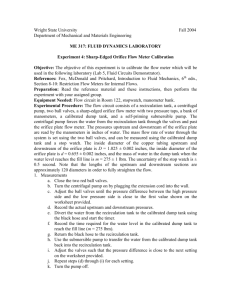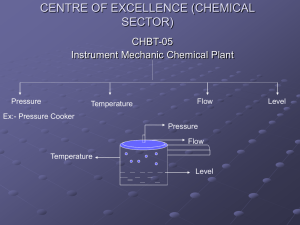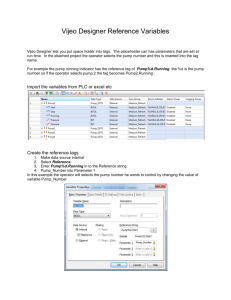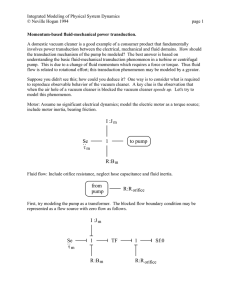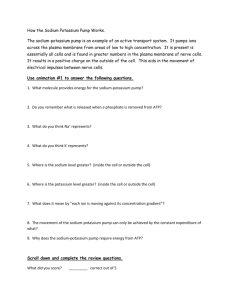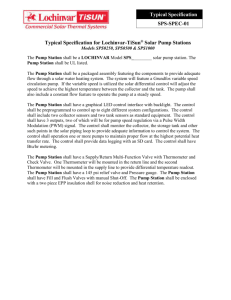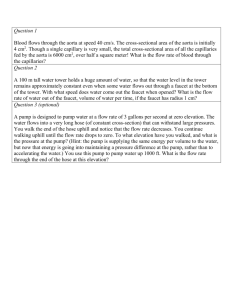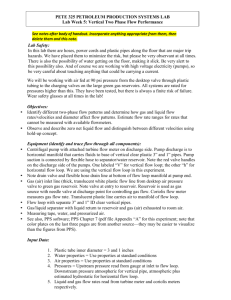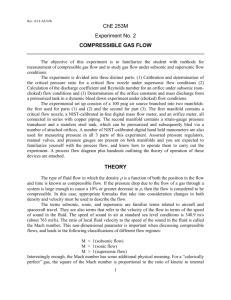Centrifugal Pump Characteristics
advertisement
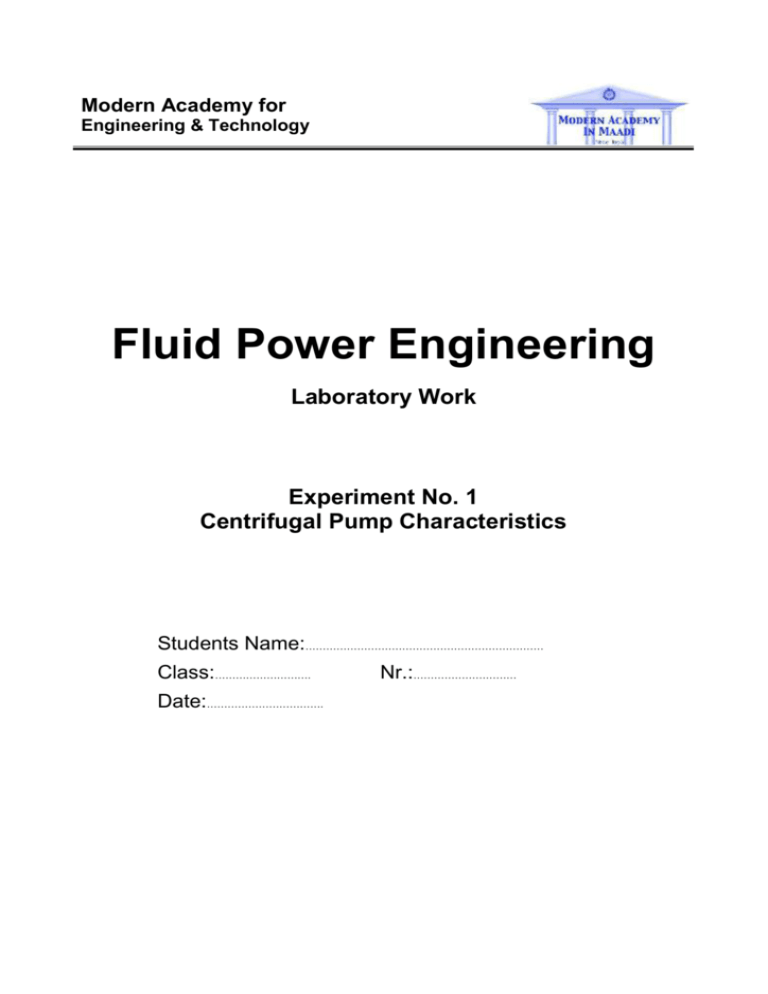
Modern Academy for Engineering & Technology Fluid Power Engineering Laboratory Work Experiment No. 1 Centrifugal Pump Characteristics Students Name:…………………………………………………………… Class:………………………. Date:……………………………. Nr.:………………………… Centrifugal Pump Characteristics This experiment is designed to measure the flow characteristics of a centrifugal pump; Head (Flow rate). The set-up includes: the control of the pump exit pressure the measurement of the pump exit pressure the calculation of pressure head and the measurement of the pump flow rate. 1. Test stand Fig.1 Centrifugal pump test stand 1 The test stand is shown by Fig.1, while its hydraulic circuit is given by Fig.2. The system consists of the following elements: (1) Water tank (2) Pump suction pipe (3) Centrifugal pump (4) Electric motor (n=2800 rpm) (5) Throttle valve (6) Orifice flow meter (7) Return pipe line (8) pump exit pressure gauge (9) Orifice meter inlet pressure gauge (10) Orifice meter outlet pressure gauge (11) Power indicating lamb (12) Motor on/off switch (13) Motor running indicating lamb (14) Pump suction valve Fig.2 Hydraulic circuit of the centrifugal pump test stand The pump exit pressure (P) is measured in (bar). The corresponding head is: H = P/ρg For water H = 10 P (Where P is in bar and H is in meters) The pump exit pressure is controlled by the throttle valve (5) and measured by the pressure gauge (8). 2 The pump flow rate is measured by the orifice flow meter (6) and pressure gauges (9&10). The flow rate through the orifice meter is calculated as follows. Q Cd A o Where 2 (P1 P2 ) Q= Ao = ρ= P1 = P2 = Cd = Water flow rate, m3/s Orifice area = 78.54 mm2 Water Density = 1000 kg/m3 Orifice meter inlet pressure, Pa Orifice meter outlet Pressure, Pa Discharge coefficient, (= 0.611 for sharp edged orifice) Q 68.817 P1 Or Where Q = Water flow rate, L/min P1 = Orifice meter inlet pressure, bar P2 = Orifice meter outlet Pressure (= 0 bar for this setup) 2. Steps of measurements (1) Close the throttle valve (5) completely. (2) Connect the power cable; the power lamb (13) goes on (red color). (3) Switch the electric motor on, switch No. (12); the indicating lamb (11) goes on (green color) (4) Get the readings of the three pressure gauges, and record them on the given table. (5) Open the throttle valve (5) gradually and record the pressure gauges readings until the valve is fully open. (6) Close the throttle valve (5) gradually and record the pressure gauges readings until the valve is fully closed. (7) Switch the electric motor off, switch No. (12); the indicating lamb (11) goes off. (8) Disconnect the power cable; the power lamb (13) goes off. 3 3. Results No. P P1 P2 Q H bar bar bar Q 68.817 P1 H =10 P m L/min 1. 2. 3. 4. 5. 6. 7. 8. 9. 10. 11. 12. 13. 14. 15. Pumping Head H (m) 15 10 5 0 5 10 15 Flow Rate Q (L/min) 4 20 25 4. Discussion and conclusion 5

